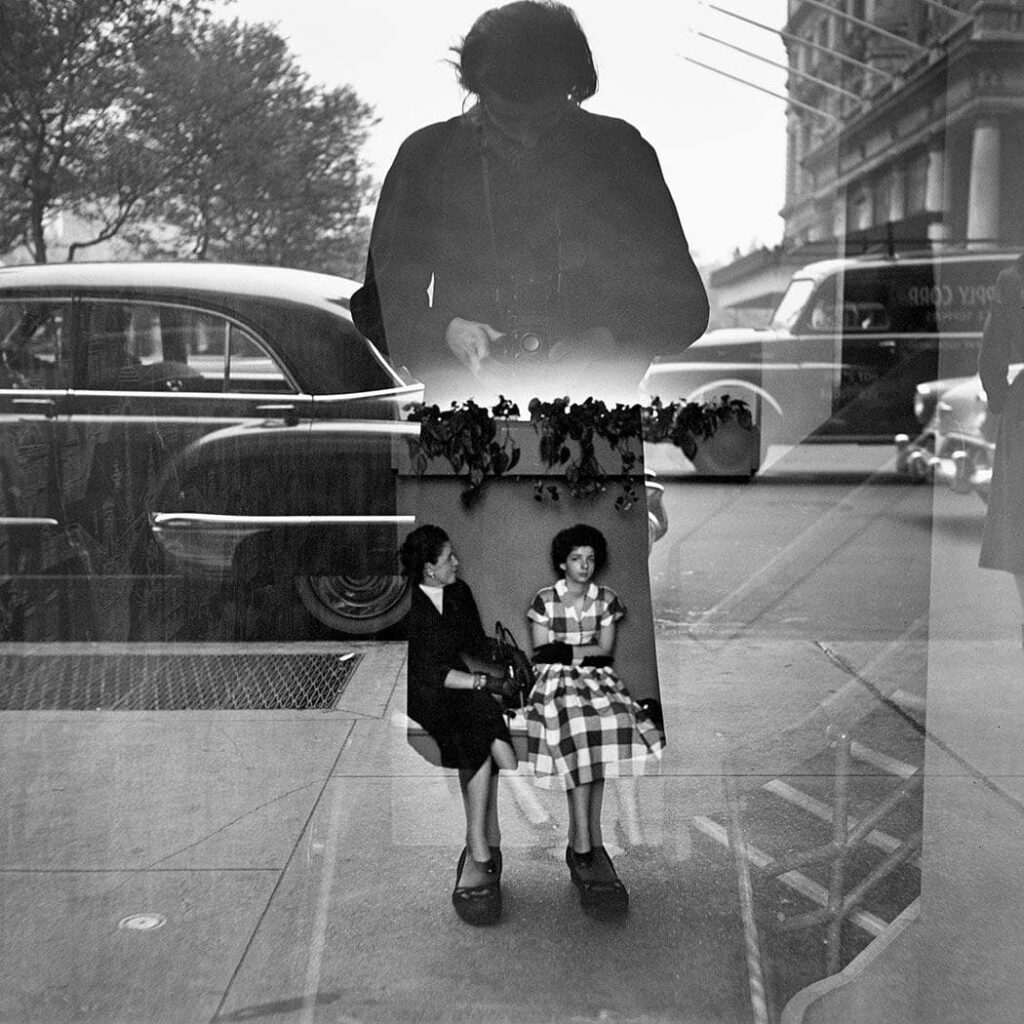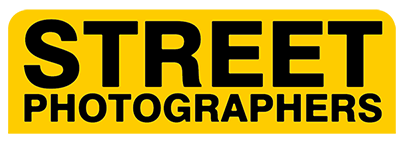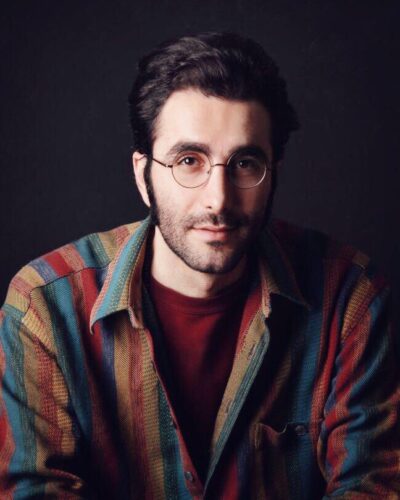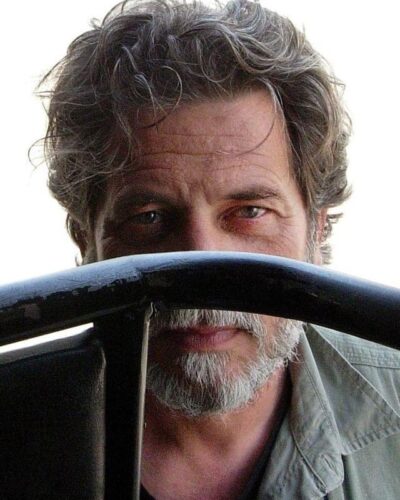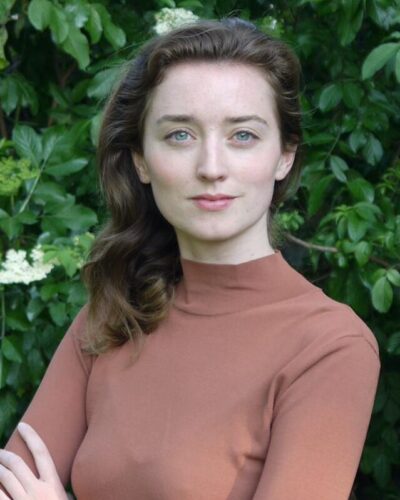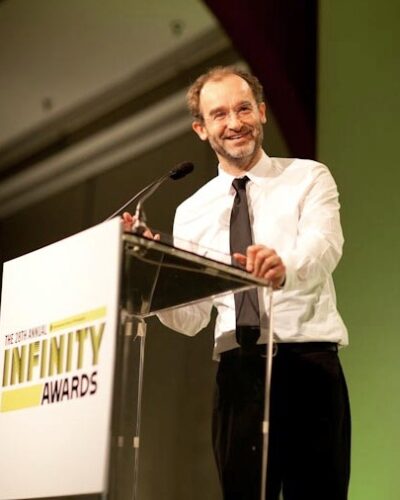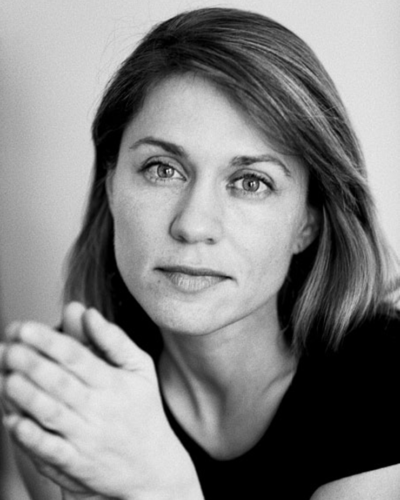The Best Women Street Photographers of All Time
Street Photography is one of the most challenging and exciting genres of photography. Sometimes when we see a photo, it gets into our mind and remains eternal for life. This could be moments of sorrow and pain, a disaster happening in the world, usual human interaction in our society, or even a moment of everyday life.
Having awareness of photography history and the famous actors of that history will definitely make you a better photographer. If you are trying to capture perfect photographs, knowing the masters of photography will show you what makes a photograph perfect.
In this article, we will introduce some of impressive master women photographers in this genre.
Stay with us.
Berenice Abbott
Berenice Alice Abbott (July 17, 1898 – December 9, 1991) was an American photographer. Abbott’s work often focused more on cityscapes, social documentary and street photography. Her introduction to photography came when she made contact with the famed Surrealist Man Ray, who hired her as a darkroom assistant in 1923. It was in 1925 at the Man Ray Studio that Abbott first saw photographs by Eugène Atget.
In 1929, Abbot began documenting the city in the manner of her of one of her major influences Eugène Atget. The impact of Atget’s photographs on Abbott was immediate: “There was a sudden flash of recognition – the shock of realism unadorned.” Abbott was part of the straight photography movement which stressed the importance of photographs being unmanipulated in both subject matter and developing processes. Today, Abbott’s photographs are held in the collections of The Museum of Modern Art in New York, the J. Paul Getty Museum in Los Angeles, and the Walker Art Center in Minneapolis, among others.
Quotes:
“The challenge for me has first been to see things as they are, whether a portrait, a city street, or a bouncing ball. In a word, I have tried to be objective. What I mean by objectivity is not the objectivity of a machine, but of a sensible human being with the mystery of personal selection at the heart of it. The second challenge has been to impose order onto the things seen and to supply the visual context and the intellectual framework – that to me is the art of photography.”
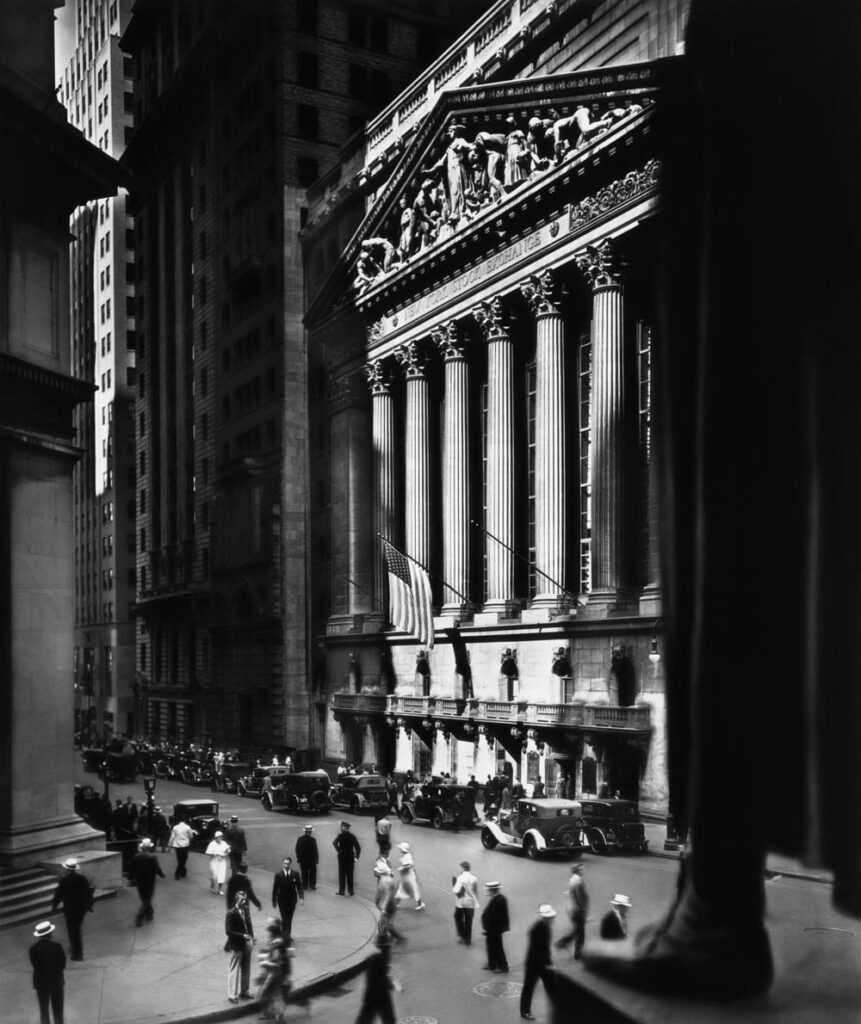
Diane Arbus
Diane Arbus (March 14, 1923, July 26, 1971). She is one of the most original and influential artists of the twentieth century. She studied photography with Berenice Abbott, Alexey Brodovitch, and Lisette Model and had her first published photographs appear in Esquire in 1960. In 1963 and 1966 she was awarded John Simon Guggenheim Fellowships and was one of three photographers whose work was the focus of New Documents, John Szarkowski’s legendary exhibition at The Museum of Modern Art, New York, in 1967. Arbus’s depictions of couples, children, female impersonators, nudists, New York City pedestrians, suburban families, circus performers, and celebrities, among others, span the breadth of the postwar American social sphere and constitute a diverse and singularly compelling portrait of humanity.
Quote:
“Freaks was a thing I photographed a lot. It was one of the first things I photographed, and it had a terrific kind of excitement for me. I just used to adore them. I still do adore some of them.”

Dorothea Lange
Dorothea Lange (May 26, 1895 – October 11, 1965) was an American documentary photographer and photojournalist. Lange’s photography focused more on capturing the struggles and realities of everyday life, often inrural settings or migrant camps, rather than the urban environments commonly associated with street photography. She studied photography at Columbia University in New York City under Clarence H. White, a member of the Photo-Secession group. She photographed endow her work with unforgettable power.
FSA director Roy Stryker considered her most famous portrait, Migrant Mother, Nipomo, California (1936), to be the iconic representation of the agency’s agenda. The work now hangs in the Library of Congress. In 1940, Lange became the first woman awarded a Guggenheim Fellowship in photography. In 1953–54 she worked with Edward Steichen on “The Family of Man,” an exhibition organized by the Museum of Modern Art (MoMA) in New York in 1955. Steichen included several of her photographs in the show. Over the next 10 years she traveled the world, photographically documenting countries throughout Asia, notably South Asia, the Middle East, and South America. She produced other work, including the images of home and family life published in American Country Woman (1964).
Quote:
“The camera is an instrument that teaches people how to see without a camera.”
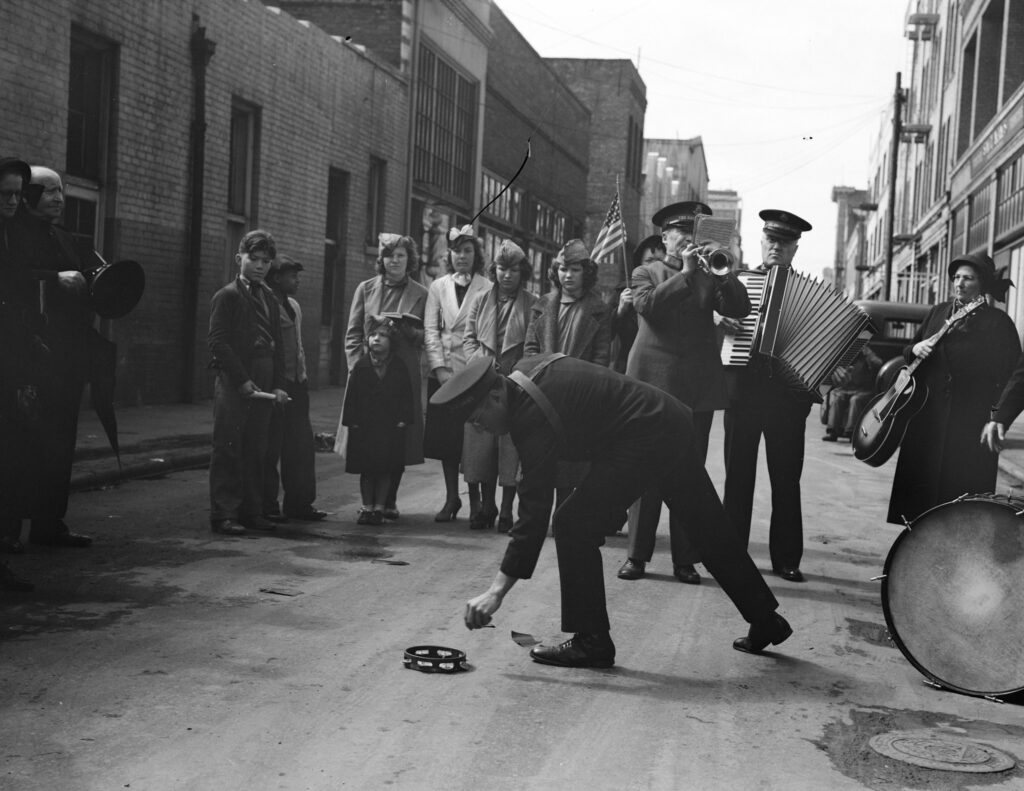
Esther Bubley
Esther Bubley (February 16, 1921 – March 16, 1998) was an American photographer. Bubley’s photography often included street scenes and urban settings. Her work captured the broader spectrum of human experience, encompassing both public and private moments in diverse environments. Having developed an interest in photography in high school, Bubley received her big break in 1942, when she was hired as a darkroom assistant for Roy Stryker, the famed head of the photographic unit of the Office of War Information (OWI) in Washington, D.C. With Stryker’s guidance, Bubley embarked on her first assignments documenting wartime in the nation’s capital.
She worked for several agencies of the American government and her work also featured in several news and photographic magazines. She was also a “people photographer” with an uncanny ability to achieve intimacy withher subjects. In 1955, Steichen included her work in his monumental The Family of Man exhibition. Bubley was a superb photographer, capable of creating striking modernist patterns in black and white and color under technically challenging conditions.
Quote:
“Put me down with people, and it’s just overwhelming,”
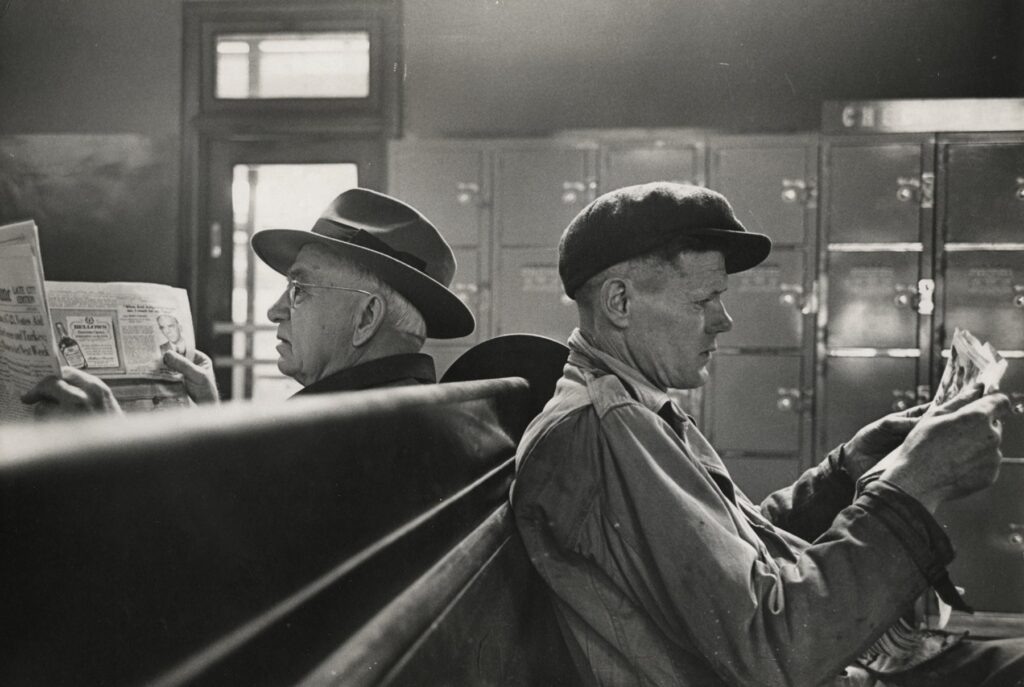
Evelyn Hofer
Evelyn Hofer (January 21, 1922 – November 2, 2009) was a German-American documentary photographer. Hofer’s work has influenced such photographers as Thomas Struth, Joel Sternfeld, Adam Bartos, Rineke Dijkstra, Judith Joy Ross, and Alex Soth. A street photographer of a different stripe, Hofer’s street pictures convey the artist’s concern with sociological connections and offer a pointed look at society and its conditions. Her trades-people and toffs, her families and social groups are more than just intimate portraits – they epitomize the possibilities and restrictions of the human condition. Hofer’s studies covered everything from photographic technique to art theory. She didn’t just learn composition and the underlying theories of aesthetics, she also learned the chemistry involved in producing prints. Beginning in the early 1960s she became one of the first fine art photographers to adopt the use of color film and the complicated dye transfer printing process as a regular practice.
Throughout her long career, Hofer continued to shoot in both color and black and white – determining which was the more apt for the picture at hand.In the middle 1950s Hofer’s career took an important turn when the writer Mary McCarthy asked her to provide the photographs for The Stones of Florence, a literary exploration of the history and culture of that city. Over the next forty years Hofer collaborated with writers including V.S. Pritchett and Jan (James) Morris to produce books on Spain, Dublin, New York City, London, Paris, Switzerland, and Washington, D.C. in which she mixed portraits and land or cityscape. Hofer’s goal was to go beyond documentary photography to create a subjective interpretation of the world, conveying both the spirit of the time and a timeless message.
Quote:
“One reason I like to work with a big camera is that I don’t like to spy on people…I respect them and I want them to respect what we are doing together.”
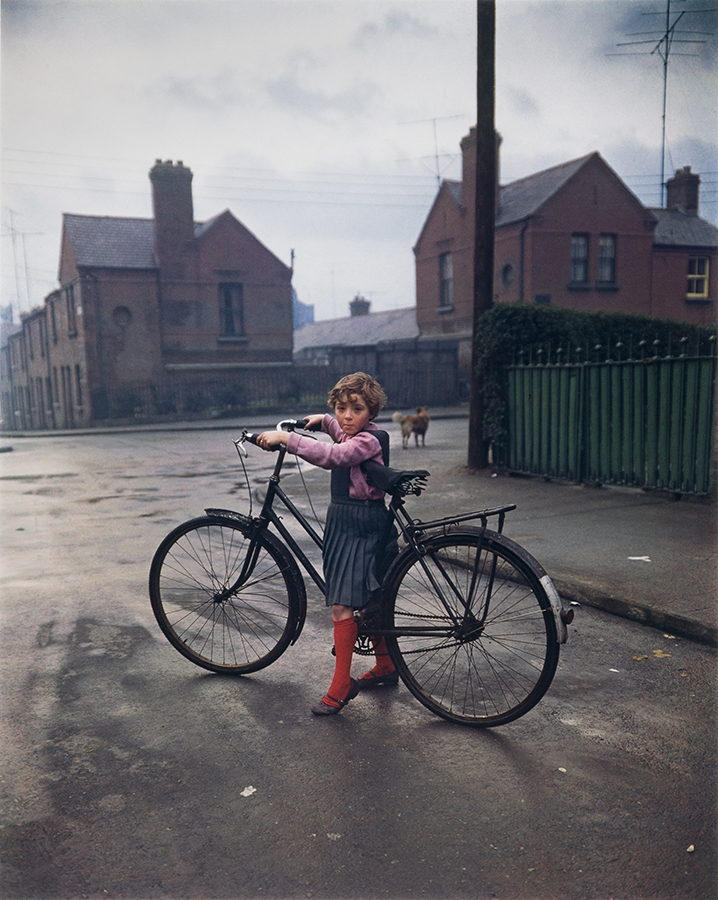
Helen Levitt
Helen Levitt (August 31, 1913 – March 29, 2009) was an American photographer and cinematographer. She was particularly noted for her iconic street photography around New York City and most well known for taking pictures of children playing in the streets. She began photography when she was eighteen and attended many classes and events hosted by Manhattan Film and Photography League. Inspired by earlier masters such as Walker Evans and Henri Cartier-Bresson, she took her 35-milimeter camera to the streets, intimately capturing the daily activities of women, children, and minority communities. She became intrigued with the transitory chalk drawings that were part of the New York children’s street culture of the time. She began to photograph these chalk drawings, as well as the children who made them for her own creative assignment.
She also explored the uncanny elements of the everyday, often capturing people in strange poses alongside surreal juxtapositions of people, places, and things. The New York Times described her images as “fleeting moments of surpassing lyricism, mystery, and quiet drama.” Levitt was one of the early pioneers of colour street photography and one of the first photographers to exhibit her colour work in 1974. In 1959 and 1960, she received two grants from the Guggenheim Foundation for her pioneering work in color photography.
Quotes:
“It would be mistaken to suppose that any of the best photography is come at by intellection; it is like all art, essentially the result of an intuitive process, drawing on all that the artist is rather than on anything he thinks, far less theorizes about.
“I go where there’s a lot of activity. Children used to be outside. Now the streets are empty. People are indoors looking at television or something.”
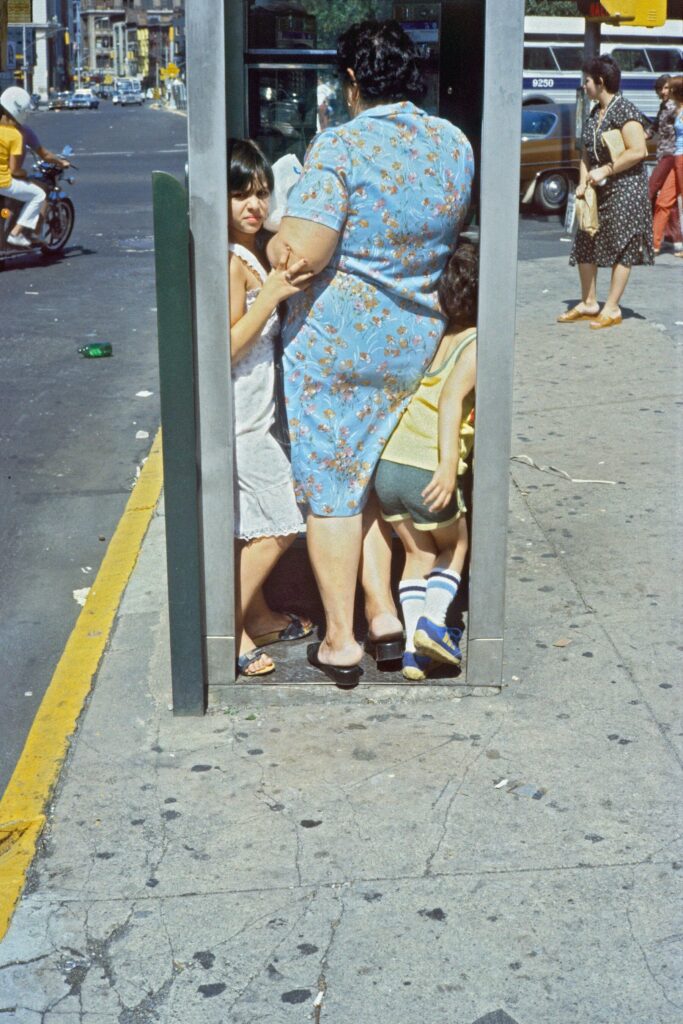
Ilse Bing
Ilse Bing (23 March 1899 – 10 March 1998) German avant-garde photographer. She was a pioneering figure in the genre, known for her innovative use of the camera to capture urban life in cities such as Paris, Frankfurt, and New York during the early to mid-20th century. Bing’s work was often focused on capturing the energy, movement, and everyday scenes of city streets, using light and shadow to create dynamic compositions. Bing’s street photography was characterized by her ability to capture fleeting moments and to convey a sense of atmosphere and emotion. She experimented with various techniques, including using reflections, shadows, and unusual angles, to create visually striking images that provided unique perspectives on urban life.
In addition to her street photography, Bing also worked as a photojournalist and fashion photographer, further showcasing her versatility and skill behind the camera. Her contributions to street photography have earned her recognition as one of the pioneers of the genre, and her work continues to be celebrated for its artistic merit and cultural significance.
Quote:
“I felt that the camera grew an extension of my eyes and moved with me.”
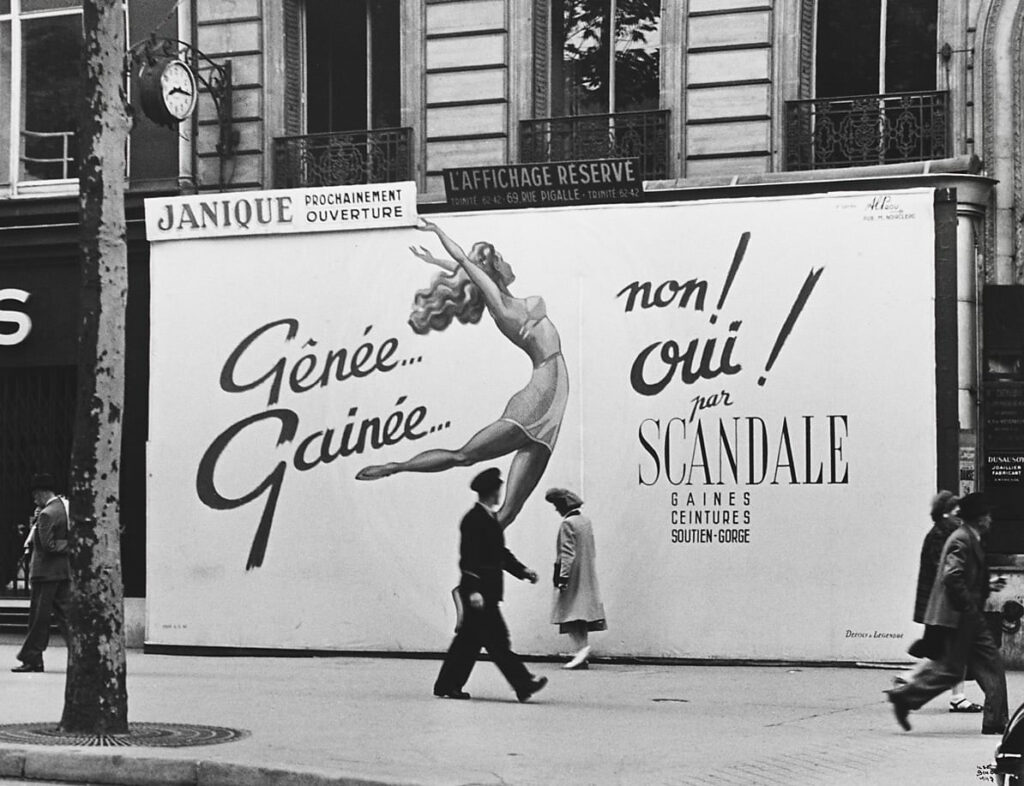
Inge Morath
Ingeborg Hermine Morath (27 May 1923 – 30 January 2002 was a prominent street photographer. She is renowned for her candid and poetic photographs capturing everyday life in New York City, particularly in neighborhoods like Harlem and the Lower East Side. A friend of photographer Ernst Haas, she wrote articles to accompany his photographs and was invited by Robert Capa and Haas to Paris to join the newly founded Magnum agency as an editor and researcher . She was one of the first female photographers to join the legendary Magnum agency. While working on her own first assignments, Morath also assisted Henri Cartier-Bresson during 1953-54, becoming a full member in 1955.
Morath was the third wife of Pulitzer Prize-winning playwright Arthur Miller. Some of her most important work consists of portraits, but of passers-by as well as celebrities. She photographed a range of subjects: documentary stories like 1954’s Fiesta in Pamplona captured the Spanish city’s running of the bulls, or those from her extensive travels in China; singular street photography (see: A llama in Times Square); portraits; fashion photography; and work on sets of television and films.
Quote:
“To take pictures had become a necessity and I did not want to forgo it for anything.”

Jill Freedman
Jill Freedman (October 19, 1939 – October 9, 2019) was a diligent street and documentary American photographer who spent her life capturing the complexities of the day, with rare veracity and grace. Originally published in 1981, Street Cops represents her most iconic body of work, one that embodies the sensitivity and perspicacity for which she is renowned. She often spent months immersed with her subjects, observing them through her lens as they went about their daily lives. She appeared in solo and group exhibitions throughout the world, and contributed to many prominent publications.
Quote:
“I like to work two ways, either on a specific idea or just wandering around, getting lost, snapping. Eventually all the wanderings go together, and then I find out what I’ve been doing.”
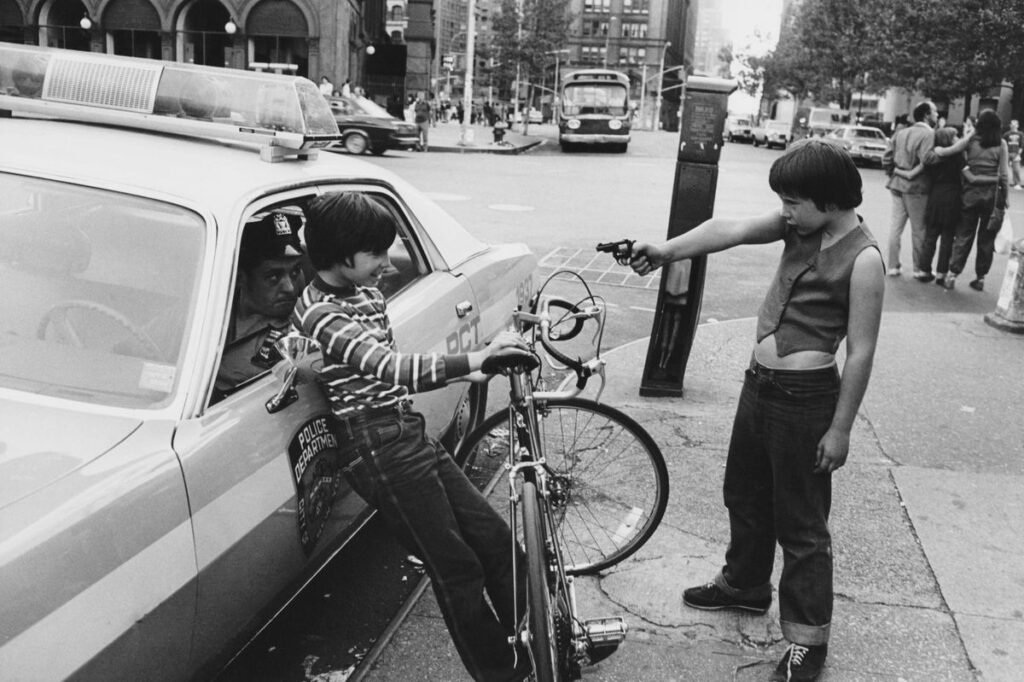
Lisette Model
Lisette Model (born Elise Amelie Felicie Stern; November 10, 1901 – March 30, 1983) was an Austrian-born American photographer primarily known for the frank humanism of her street photography. Lisette Model began her creative life as a student of music. She never formally studied photography but took it up in the 1930s while living in Paris. Model’s images can be categorized as “street photography,” a style which developed after the invention of the hand-held camera, which made quick, candid shots possible.
Model’s main subject was the social and psychological landscape of New York City during the 1940s. Lisette Model’s photography exemplifies the European photographic tradition and its influence on American modern photography. Avant-garde techniques such as low-angles, sense of movement, window reflections, and natural photomontages defined her approach. she met the Russian painter Evsa Model, Moving to Paris in 1924, whom she married and gaine her surname.
Quotes:
“Photography through the camera is an instrument of detection. We photograph not only what we know, but also what we don’t know.”
“I have often been asked what I wanted to prove by my photographs. The answer is, I don’t want to prove anything. They prove to me, and I am the one who gets the lesson.”
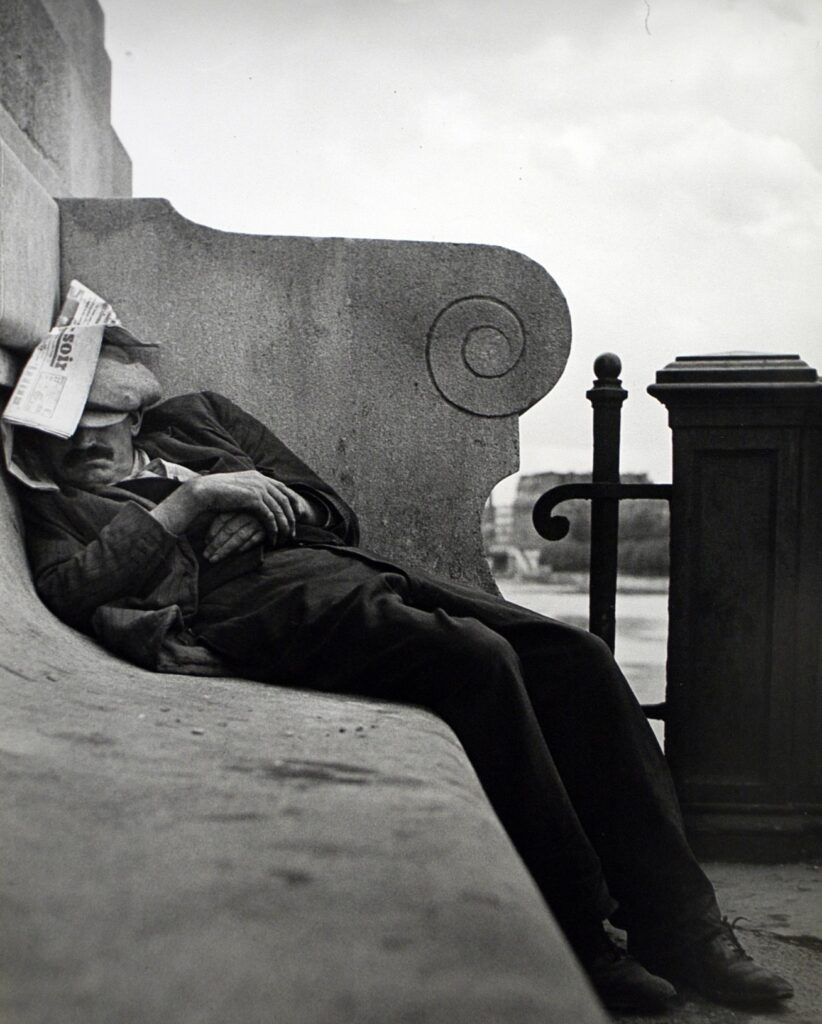
Margaret Bourke-White
Margaret Bourke-White (June 14, 1904 – August 27, 1971) was an American documentary photographer, Life magazine’s first female photographer, and the first female war correspondent credentialed to work in combat zones during World War II. She captured countless iconic images of 20th-century life, conflict, and the politicians at its center. She was the first foreign photographer to make pictures of Soviet industry and the only Western photographer to witness the German invasion of Moscow in 1941.
One of her most iconic pictures came after the World War II, when she visited India and captured Mahatma Gandhi reading peacefully in his home, merehours before his assassination in 1948. She served as a photographer for Life during Korean War of 1950–1953. She was a great and tenacious photographer. She was awarded US Camera Achievement Award in 1963 and Honor Roll Award from American Society of Magazine Photographers in 1964. Her work was her life, and her life was flamboyantly spectacular.
Quote:
“Photography is a very subtle thing. You must let the camera take you by the hand, as it were, and lead you into your subject.”
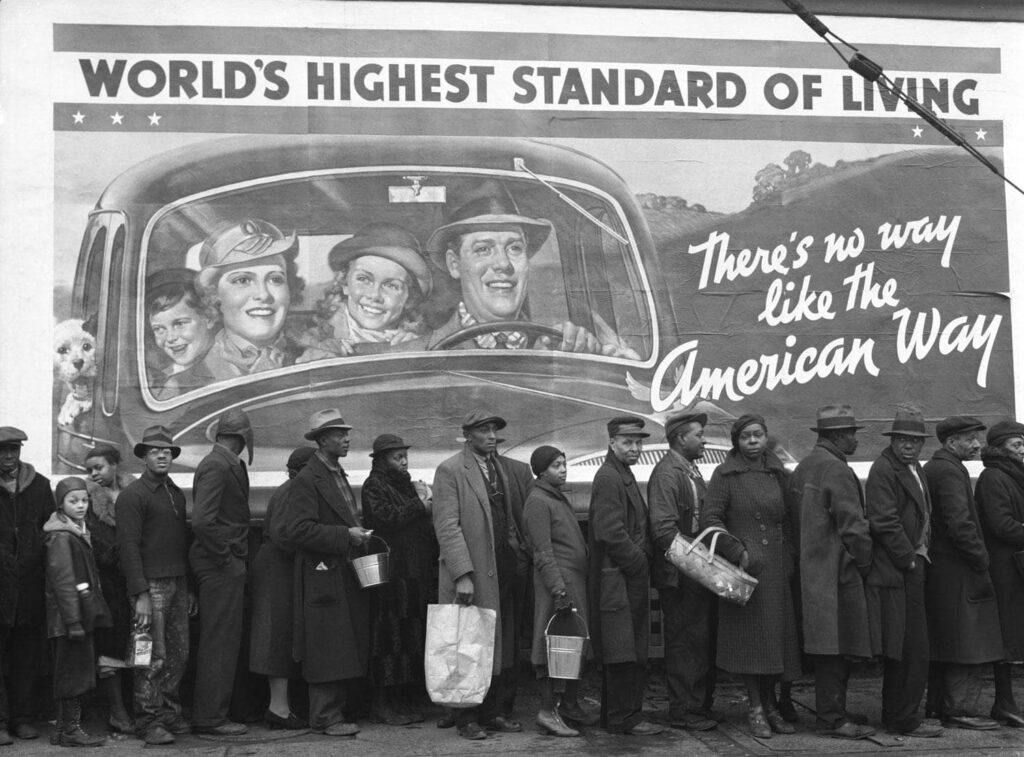
Mary Ellen Mark
Mary Ellen Mark (March 20, 1940 – May 25, 2015 was known for her exceptional work as a street photographer, among other genres. she earned a BA in painting and art history and an MA in photojournalism from the University of Pennsylvania. Her work highlighted Vietnam War protesters and societal outcasts in order to underscore their importance to contemporary society. Her best known works include studies of severely ill women at Oregon State Mental Hospital and runaway teenagers in Seattle.
She also worked in India for many years, producing studies of Mother Teresa, circuses, and brothels in Bombay. Mark has been presented with the Cornell Capa Award (2001) and an Infinity Award (1997) from the International Center of Photography, an Erna & Victor Hasselblad Foundation grant (1997), and a John Simon Guggenheim fellowship (1994). Her works are held by institutions including the J. Paul Getty Museum; the Museum of Fine Arts, Houston; the Philadelphia Museum of Art, and the Whitney Museum of American Art.
Quotes:
“I just think it’s important to be direct and honest with people about why you’re photographing them and what you’re doing. After all, you are taking some of their soul, and I think you have to be clear about that.”
“I think you have to have a real point of view that’s your own. You have to tell it your way. And, I think that it’s a mistake to shoot for a specific magazine’s point of view because it’s never going to be as good. You have to shoot for yourself and photograph [the way] you believe it.”
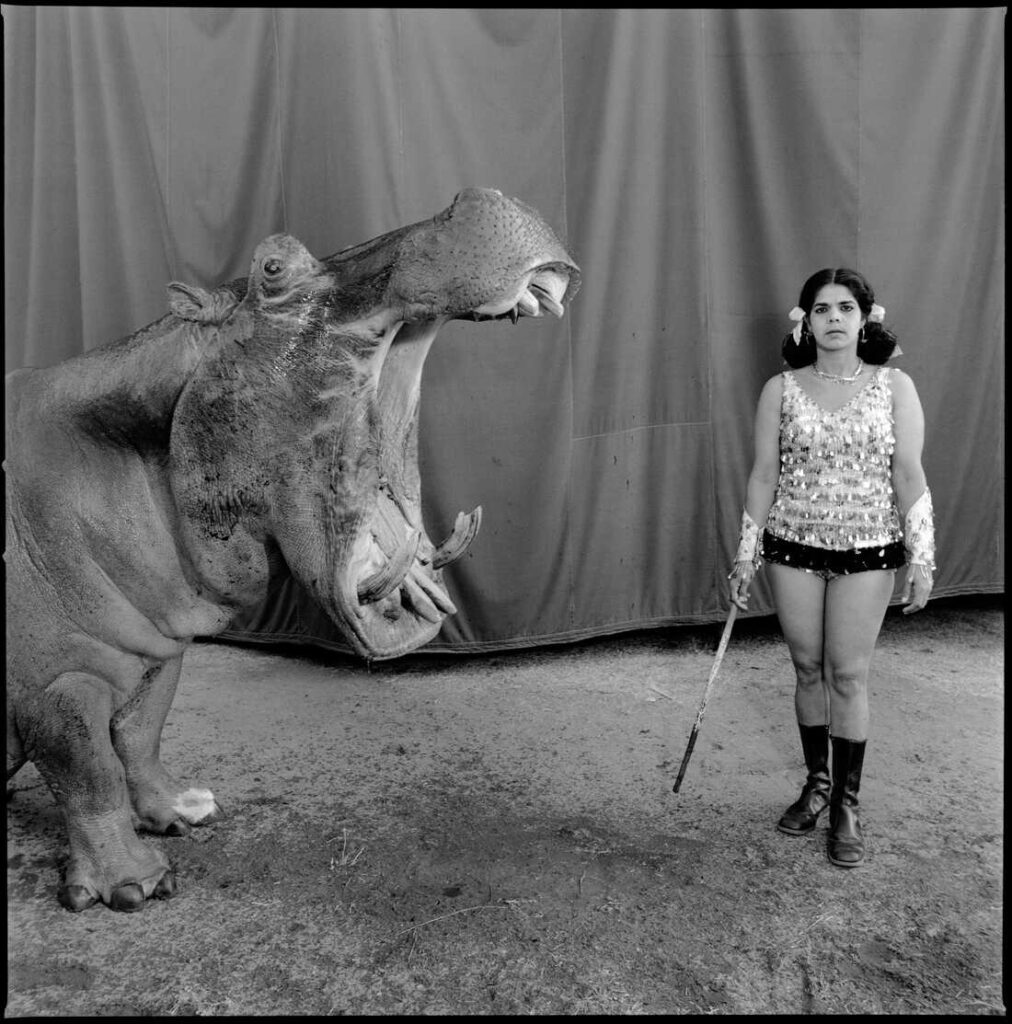
Rebecca Lepkoff
Rebecca Lepkoff (born Rebecca Brody; August 4, 1916 – August 17, 2014) was an American street photographer. About 1945 she joined the Photo League, and for the next four years attended its classes, studying with Paul Strand, among others, and also exhibiting her work in the League’s group shows. She is best known for her images of New York and its people taken during the 1940s and 1950s, especially of Jewish immigrants on the Lower East Side.
Her work has been featured in a number of books, galleries, and museum exhibits, including A History of Women Photographers by Naomi Rosenblum; Bystander: A History of Street Photography by Joel Meyerowitz and Colin Westerbeck; and “The Radical Camera, New York’s Photo League (1936-1951). She photographed with a strong sense of light and abstraction and captured the rhythm of the street.
Quote:
“I went outside and at that time, people lived in the streets—everything happened in the streets,”
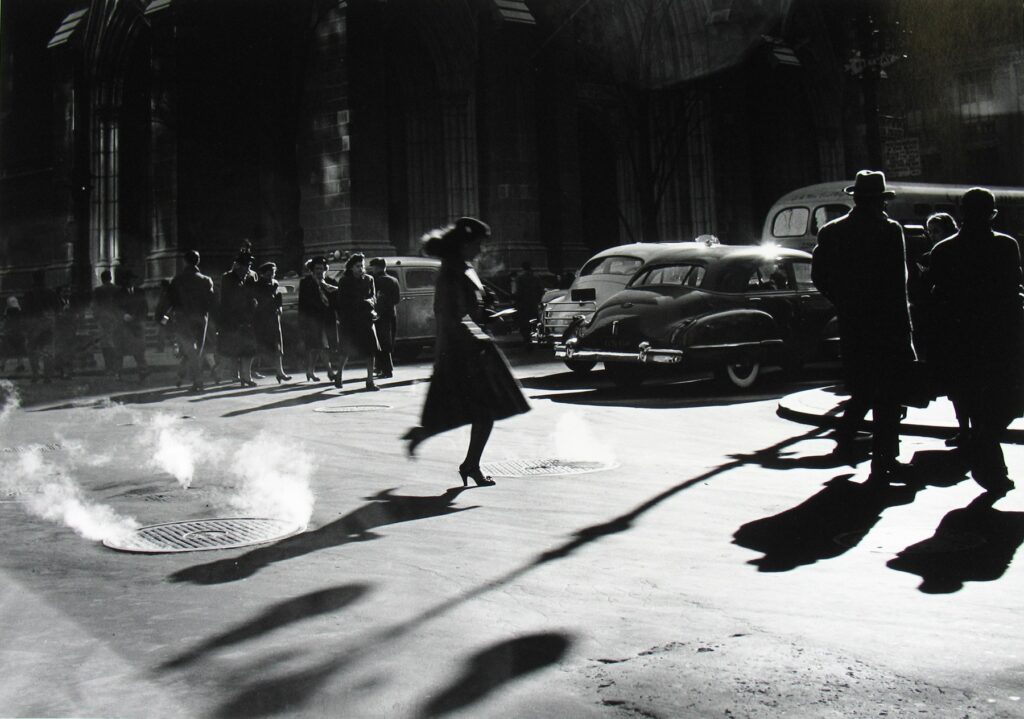
Ruth Orkin
Ruth Orkin (September 3, 1921 – January 16, 1985) was an American photojournalist and filmmaker street photographer, She worked as a nightclub photographer. During the day, she also shot baby portraits to make extra money, which enabled the purchase of her first ‘professional’ camera. She spent her free time wandering the city streets, capturing compelling images of everyday life, including candid portraits of children in her neighborhood.
In 1952 Orkin married photographer, filmmaker and fellow Photo League member Morris Engel. Orkin and Engel collaborated on two major independent feature films, Little Fugitive which was nominated for an Academy Award in 1953, and Lovers and Lollipops (1955). After the success of the two films, Orkin returned to photography, taking color shots of Central Park as seen through her apartment window.
Orkin photographed Hollywood stars, renowned musicians, and everyday people on the streets of New York City, Italy, Israel, and many other locations. Her work is characterized by honesty and sensitivity, as well as the same deep regard for her subjects that underpinned the images of the other great photographers of the post-war period. In 1959 Orkin was named one of “The Ten Top Women Photographers in the U.S.” along with Dorothea Lange and Margaret Bourke-White by the Professional Photographers of America.
Quotes:
“Being a photographer is making people look at what I want them to look at.”
“To be a photojournalist takes experience, skill, endurance, energy, salesmanship, organization, wheedling, climbing, gatecrashing, etc. – plus an eye and patience.”
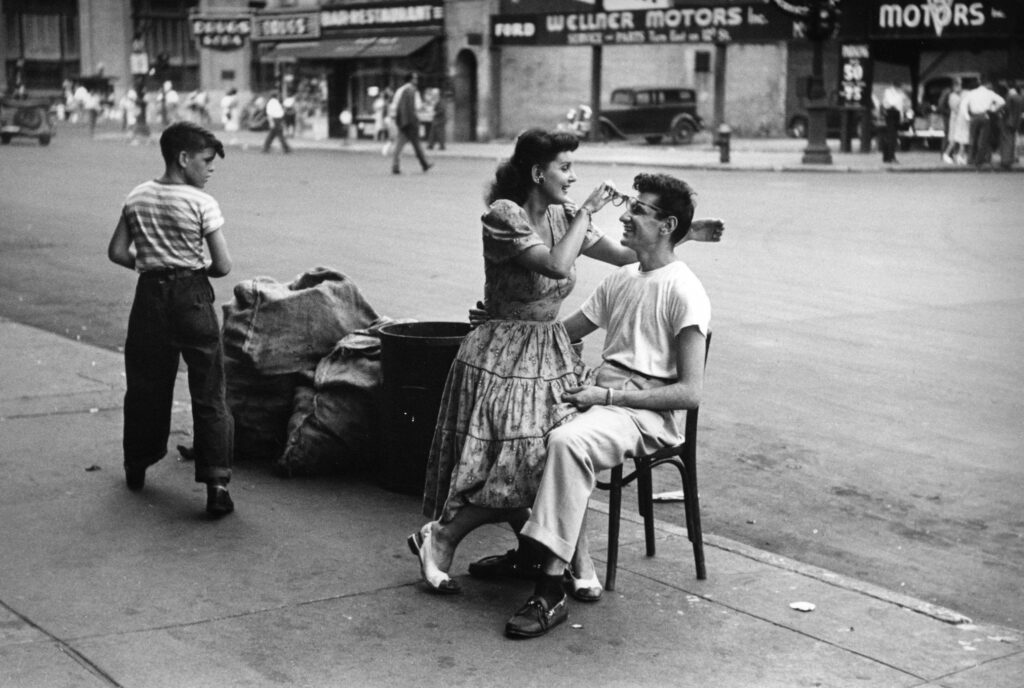
Susan Meiselas
Susan Meiselas (born June 21, 1948) is an American photographer. She has captured compelling images of life in various urban environments and on the streets. She joined Magnum Photos in 1976 and has worked as a freelance photographer since then. Meiselas is best known for her coverage of the insurrection in Nicaragua and her documentation of human rights issues in Latin America, which were published widely throughout the world.
Her work is included in American and international collections. She has been the President of the Magnum Foundation since 2007, with a mission to expand diversity and creativity in documentary photography. Her awards include the Robert Capa Gold Medal, Leica Award for Excellence, Maria Moors Cabot Prize, the Hasselblad Foundation Prize, the Cornell Capa Infinity Award, and most recently, the Harvard Arts Medal.
Quote:
“Finding a photograph is often like picking up a piece from a jigsaw-puzzle box with the cover missing. There’s no sense of the whole. Each image is a mysterious part of something not yet revealed.”
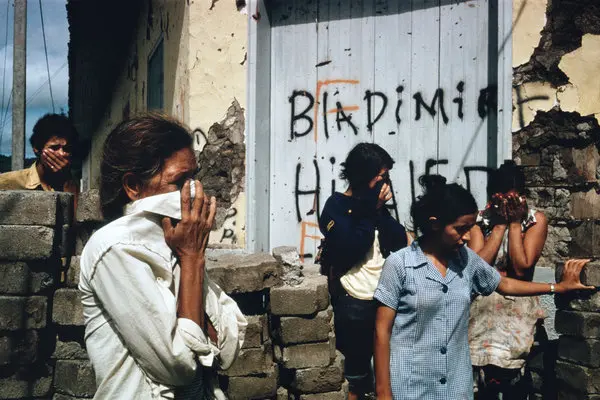
Vivian Maier
Vivian Dorothy Maier (February 1, 1926 – April 21, 2009) was an American street photographer whose work was discovered and recognized after her death. She is often referred to as the Mary Poppins of Street Photography on account of the fact that she spent most of her career working as a nanny. She also produced a number of self-portraits (black-and-white and color) which have given the world a picture of an otherwise unknown, intensely private figure. During her lifetime, Maier’s photographs were unknown and unpublished; many of her negatives were never developed.
A Chicago collector, John Maloof, acquired some of Maier’s photos in 2007, while two other Chicago-based collectors, Ron Slattery and Randy Prow, also found some of Maier’s prints and negatives in her boxes and suitcases around the same time. Photographer Mary Ellen Mark has compared her work to that of Helen Levitt , Robert Frank, Lisette Model, and Diane Arbus. Joel Meyerowitz, also a street photographer, has said that Maier’s work was “suffused with the kind of human understanding, warmth and playfulness that proves she was ‘a real shooter’.”
Quotes:
“I’m a sort of spy.”
